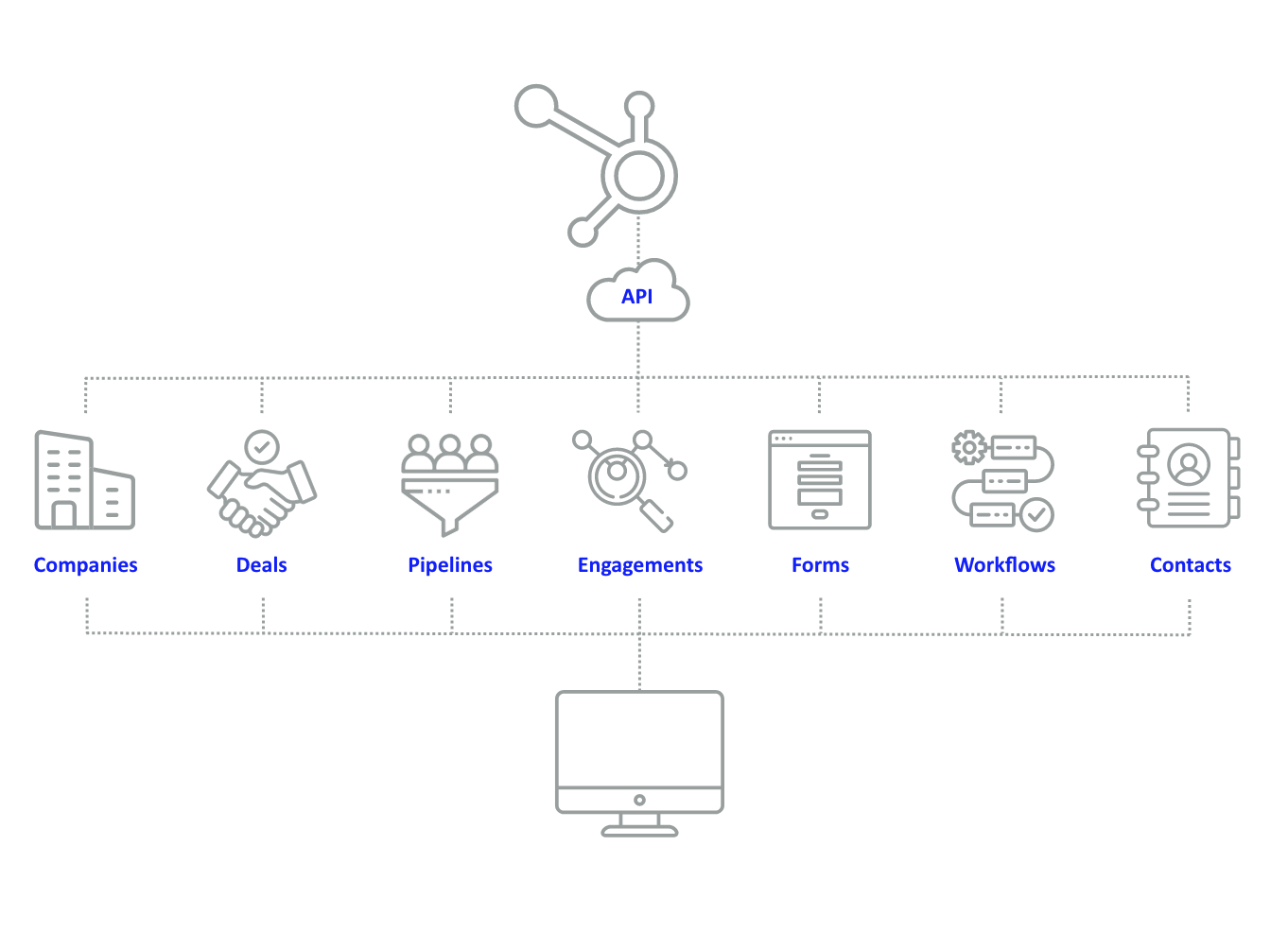Solutions
HubSpot Integration
Integrating HubSpot with your internal database is a strategic move that can significantly enhance efficiency and unlock the full potential of your data.

However, seamless integration requires meticulous planning and execution to ensure a harmonious synergy between systems. At Dualled, we specialise in helping businesses achieve seamless and effective integration between HubSpot and their internal databases. Our approach involves mapping out data flows, addressing potential conflicts, and establishing protocols to ensure cohesive integration that enhances overall business processes. This strategic approach sets the foundation for a unified and streamlined operation, where data seamlessly flows between HubSpot and your internal databases.
To get started on your HubSpot integration journey, we work closely with you to understand your integration goals. We will then set up the HubSpot API and conduct a thorough analysis of your internal database to identify compatibility and potential data mapping requirements. Our experts will meticulously handle the data migration process, ensuring a smooth transfer of information.
We prioritise data security and compliance and put in place robust authentication and authorisation processes. Additionally, we create a testing environment to validate the integration, perform incremental data syncing to ensure data accuracy, and implement data validation, logging, and monitoring mechanisms.
Throughout the integration process, we maintain strict adherence to security measures and compliance standards to safeguard your data. In addition, we provide comprehensive documentation to ensure ease of maintenance and knowledge transfer.
As consultants, our first task is to understand your business objectives thoroughly. We conduct stakeholder interviews and workshops to define clear integration goals that align with your strategic priorities. We then help prioritise the integration requirements based on factors such as ROI, time-to-market, and resource constraints, ensuring that the integration effort delivers maximum value to the business.
Our technical expertise allows us to navigate the HubSpot API setup process efficiently. We assist in configuring API access and obtaining the necessary authentication credentials, guiding the developers through HubSpot’s documentation and best practices. With our in-depth understanding of API protocols and security standards, we ensure that the API setup meets industry standards and aligns with your security policies.
Technical scoping begins with a thorough analysis of your internal databases and systems. We assess the data structures, schemas, and data quality issues to identify potential challenges and opportunities for integration. We work closely with your IT team to gather requirements and define data integration strategies that minimise disruption to existing workflows and systems.
Data mapping is a critical aspect of the integration process that requires careful attention to detail. We collaborate with your subject matter experts to map data fields between internal databases and HubSpot, ensuring data consistency and integrity. We then collectively develop data migration plans that account for data transformation, cleansing, and validation to ensure that data is accurately transferred and maintained across systems.
Security is a top priority in any integration project. We help implement robust authentication and authorisation mechanisms to protect sensitive data and prevent unauthorised access. We can advise on the best authentication methods for their use case, whether it’s OAuth, API keys, or other authentication protocols. We can also help establish role-based access controls to enforce data privacy and compliance requirements.
A well-configured testing environment is essential for validating the integration’s functionality and performance. We work with you to set up dedicated testing environments that replicate the production environment as closely as possible We can support you and develop comprehensive test plans and scripts to validate integration workflows, data mappings, and error-handling mechanisms, ensuring that the integration meets quality standards and regulatory requirements.
To minimise data transfer times and optimise system performance, we implement incremental data syncing mechanisms. We can help design data synchronisation processes that only transfer changed or updated data between systems, reducing bandwidth usage and processing overhead. We leverage data synchronisation techniques such as delta synchronisation and change data capture to ensure efficient and reliable data transfer.
Data validation, logging, and monitoring are essential components of any integration project. We design validation checks and error-handling mechanisms to ensure data integrity and accuracy throughout the integration process. We can help implement logging and monitoring solutions to track integration events, errors, and warnings in real-time, allowing for proactive issue resolution and performance optimisation.
Security and compliance are paramount considerations in any integration project. We can help implement robust security measures, such as data encryption, access controls, and vulnerability scanning, to protect sensitive data from unauthorised access and cyber threats. We also ensure that the integration solution complies with relevant regulations and standards such as DGPR.
Comprehensive documentation is essential for ensuring the successful deployment and maintenance of the integration solution. We create detailed technical documentation that captures the integration architecture, workflows, data mappings, and security controls. We also provide user guides, troubleshooting manuals, and training materials to help you understand and use the integration solution effectively. Additionally, we can conduct knowledge transfer sessions to empower your internal teams to support and maintain the integration solution independently.

